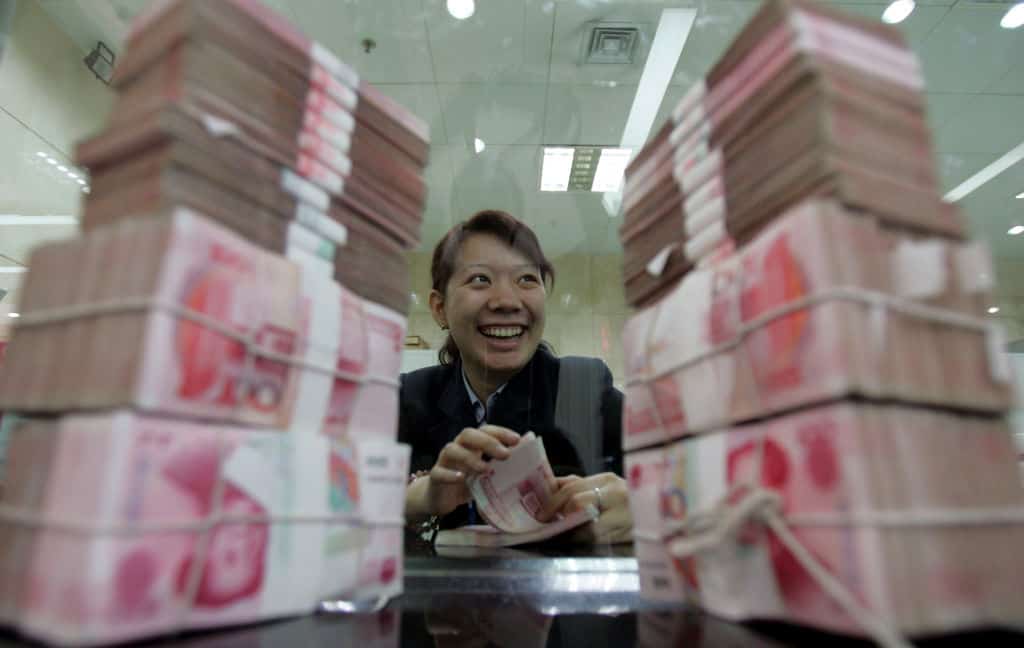In this issue
- Kazakhstan crypto mining: Making a hash of it
- Binance boss: In the money
- E-CNY: Downloads up
From the Editor’s Desk
Dear Reader,
As Beijing took a sledgehammer to China’s cryptocurrency mining industry last year, many data center operators packed up their servers and headed abroad with a sense of optimism about their prospects elsewhere.
Among those who fled to neighboring Kazakhstan, however, a sense of buyer’s remorse may be kicking in following a shutdown of the internet ordered last week by the country’s embattled authoritarian government.
No risk, no reward, right? Well, yes. But trading one country ruled with an iron fist for another run in a similar fashion is a gamble in the best of times — as crypto miners who bet on the benevolence of the autocratic Kazakh government have found out to their cost, having been forced to consider using pricey satellite data connections to keep their operations running.
To be fair, political risk is (or should be) a factor in any business decision — especially in an industry with as many enemies as crypto mining. And although a few hundred environmental protesters rallying in upstate New York last year may not constitute quite the same threat level as a regime that unplugged the internet to save itself from its own citizens, those risks are real.
As Forkast has chronicled, the crypto industry as a whole has faced hostility across society since its very beginnings — from the nabobs of Wall Street to Nobel laureate economists, and pretty much everyone else without skin in the game.
But no part of the sector has encountered such impassioned public criticism as mining, thanks to continued heavy reliance on the burning of fossil fuels to feed its gargantuan energy needs. As mining increasingly comes under attack on these grounds, the foundations of the entire crypto ecosystem are imperiled — and will remain so until miners clean up their act.
The luckless Chinese miners in Kazakhstan may not have seen their recent misfortune coming. Their counterparts in other countries have no such excuse.
Until the next time,
Angie Lau,
Founder and Editor-in-Chief
Forkast
1. Bandwidth blues

By the numbers: Kazakhstan — over 5,000% increase in Google search volume.
Internet access has been partly restored in Kazakhstan after having been cut on government orders on Jan. 5, but the country’s cryptocurrency mining industry has yet to fully recover from the outage. Miners in Kazakhstan are considering satellite internet backups as connectivity remains an issue in the world’s second-largest crypto mining hub.
- Last Wednesday, Kazakhstan’s government declared a nationwide state of emergency and shut down internet access across the country amid a wave of protests sparked by fuel price increases.
- Internet access had been largely restored by Monday morning, but was cut again hours later. People in most parts of Almaty, the nation’s biggest city, have had patchy internet access since Monday.
- “The restorations, however, are limited, unpredictable, and don’t satisfy the requirement for a stable connectivity needed for cryptocurrency mining or blockchain applications,” Isik Mater, director of research of internet monitor NetBlocks, told Forkast on Monday.
- After Kazakhstan’s internet outage, hashrates at major mining pools — including AntPool, Poolin and Binance Pool — fell significantly and were still below Jan. 4 levels as of Tuesday, according to data from BTC.com.
- Kazakhstan became the world’s second-largest Bitcoin producer last year after miners moved there en masse following an intensified crackdown on crypto mining in China, with Chinese mining rig maker Canaan signing multiple deals for expansion in Kazakhstan right before the internet shutdown. According to the University of Cambridge, Kazakhstan hosted 18% of global Bitcoin mining in August 2021.
Forkast.Insights | What does it mean?
Bitcoin mining is heading into 2022 with a reputation for ruining national grids. In China, energy shortages preceded Beijing’s clampdown on mining operators. In Iran, officials in May last year blamed power outages in Tehran and elsewhere on BTC miners. Lebanon and Kosovo suffered similar problems.
The list of countries refusing to take in miners effectively ejected from China last year is growing, a development that should be on the radar of investors and developers alike. If miners have nowhere to go, they don’t contribute to the Bitcoin hashrate, which determines the difficulty level of mining. Although the Bitcoin network can dynamically adjust the difficulty rating, hashrate is directly correlated with Bitcoin’s price.
According to Ben Caselin, head of research at crypto exchange AAX, since miners are rewarded in Bitcoin, raising the hashrate and incurring higher costs wouldn’t make sense as the fiat value of the reward remains the same.
Yet perhaps the more pressing concern for Bitcoin developers should be why they are doing so little to address the issue of the network’s energy usage? In Bitcoin’s code repository, where developers suggest improvements and upgrades, there is not one mention of energy concerns or alternative ways of securing the network, even though plenty of alternatives exist.
If Bitcoin’s price sinks this year, it will only have itself to blame.
2. CZ does it

By the numbers: richest man in Asia — over 5,000% increase in Google search volume.
Binance CEO Changpeng Zhao has become the world’s richest crypto billionaire, with an estimated net worth of US$96 billion, according to the Bloomberg Billionaires Index. Zhao’s wealth estimate would be even higher if his crypto fortune had been included in Bloomberg’s calculations, which were based on his stake in the crypto exchange he co-founded — now the world’s biggest. The 44-year-old Zhao says most of his wealth is in BNB, Binance’s own token.
- Bloomberg’s estimate of Zhao’s net worth exceeds that of the next richest person in Asia and the 12th wealthiest individual in the world, Indian tycoon Mukesh Ambani.
- Sam Bankman-Fried, founder and CEO of crypto derivatives exchange FTX, ranks at the 130th spot on Bloomberg’s index, with a net worth of US$15.5 billion. Coinbase CEO Brian Armstrong is 269th, with US$9.1 billion.
- Zhao’s wealth was measured by Forbes to be US$1.9 billion in April 2021. In November, the Wall Street Journal estimated that Binance could be worth as much as US$300 billion if it were to hold an initial public offering.
- Binance is by far the world’s largest cryptocurrency exchange by trading volume, racking up more than US$15 billion worth of trades in the past 24 hours, more than the sum of the next four top exchanges, according to Coingecko data. Bloomberg estimates that Binance generated revenue of at least US$20 billion in 2021.
- Binance is expanding its ecosystem despite increased regulatory scrutiny around the world, including Pakistan’s recent probe into a case of alleged fraud connected with the exchange.
- Late last month, Binance announced that it would soon finalize its acquisition of Swipe, a crypto Visa card provider that allows its users to spend crypto at more than 70 million locations worldwide. In October, it launched a US$1 billion accelerator fund to expand the capabilities of the Binance Smart Chain ecosystem.
Forkast.Insights | What does it mean?
The rise of Changpeng Zhao, or “CZ,” as he is commonly known, to the top of the biggest money pile owned by one person in the crypto industry comes as Binance encounters regulatory problem after regulatory problem in jurisdictions around the globe.
Binance adopted an approach favored by many other tech companies: ask for forgiveness, not permission. Uber, for instance, ignored employee rights for years, Facebook violated data privacy laws all over the world, and Binance has tried to outmaneuver regulators by creating subsidiaries and convoluted corporate structures.
Several months ago, it appeared that Binance had drawn some lessons from its regulatory woes as it went on a compliance hiring spree, floated the idea of replacing CZ with a new chief executive, and sought to hire upwards of 300 staff in Singapore in a move that appeared to suggest it might set up a headquarters in the city-state.
Since then, however, Binance has withdrawn its application to operate a crypto exchange in Singapore and announced that it is shutting down its token business there. It has also run into more regulatory trouble in the Canadian province of Ontario.
Regulators need to ask themselves whether Binance’s practices are simply the price of innovation in a fast-growing industry — or unwelcome, damaging conduct that needs to be reined in.
3. Voting with their wallets

China’s pilot digital yuan wallet application has been downloaded more than 19 million times since its launch on Jan. 3, despite the new currency, e-CNY, being available in fewer than a dozen Chinese cities.
- An estimate from data provider Qimai suggests it has been downloaded on around 2.7 million Apple devices in China. Data from Kuchuan, a similar service, shows more than 18 million Android device downloads in the country.
- The e-CNY wallet app is currently the fourth most popular free application in the Apple app store in China and No. 1 in the finance category.
- Prior to its Jan. 3 launch, the pilot app, developed by the central bank’s Institute of Digital Currency, had been available only through banks participating in e-CNY trials.
- The People’s Bank of China (PBOC) said in November that 140 million e-CNY wallets had been opened, and the total value of transactions involving e-CNY had topped US$9.7 billion.
- The central bank digital currency (CBDC) has been trialled in at least 10 major Chinese cities and is expected to be spendable in venues at Beijing’s 2022 Winter Olympics next month. The app allows users to open e-CNY wallets, which can be used for WeChat Pay and Alipay payments both online and offline.
- China’s biggest online shopping and vehicle hiring platforms, including Meituan, Jingdong and DiDi, started accepting e-CNY following the launch of the app.
Forkast.Insights | What does it mean?
In the run-up to the Beijing Winter Olympics starting on Feb. 4, at which China’s much-anticipated CBDC is expected to make its debut on the international stage, the new digital yuan is getting no shortage of attention in crypto circles. Although experts suggest a full nationwide rollout of e-CNY is now unlikely to occur in time for the games, Beijing is sparing no efforts to flex its tech innovation muscles by allowing e-CNY payments in as many settings as possible.
Popularizing e-CNY is understood to be a top priority for the PBOC, a major component of which is putting ubiquitous private payment systems Alipay and WeChat Pay in their place below the supremacy of the state. Several important issues are in play.
First, new mobile payment rules — introduced by the PBOC in November to extend state control of the use and classification of payment collection barcodes — could boost digital yuan distribution, dealing a blow to the Alipay and WeChat Pay private payment duopoly, which has fallen out of favor with the authorities.
Second, the PBOC has taken advantage of Alipay and WeChat Pay’s massive user bases by allowing e-CNY users to bundle digital yuan wallets with their existing accounts on the two platforms. Although the number of e-CNY transactions has surged dramatically over the past year, they still pale in comparison with private electronic payments, as pointed out by analysts at brokerage China Merchants Securities.
In addition, privacy concerns remain, and the central bank must take them seriously. PBOC Governor Yi Gang said in November that a delicate balance “needs to be made between privacy protection and crime prevention.” Although the authorities have repeatedly claimed that they have introduced laws to protect data and that the e-CNY system collects only minimal personal information — and supposedly much less than existing payment service providers — Beijing’s record on privacy, surveillance and human rights in general is hardly reassuring.




